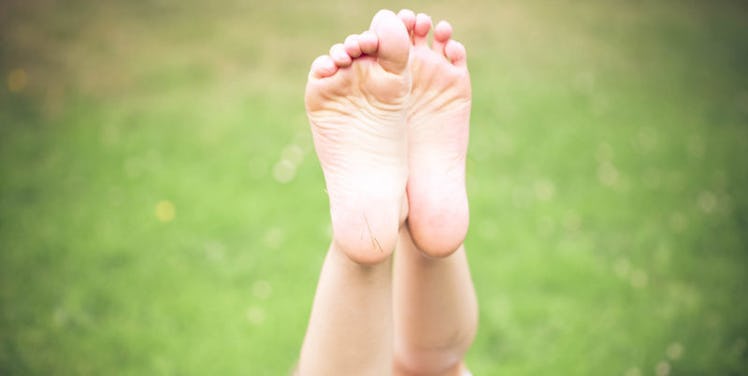
This Is Why You Get Pins And Needles
As someone who sits in front of a computer all day, I get a little bored with the standard "feet on the floor" position.
If you ask me, that's no way to sit for eight hours. So I like to change it up a bit.
Sometimes I prop one leg up on my chair and let the other one graze the floor. Other times, if I notice I've been slouching a lot, I sit cross-legged in my chair, which forces me to sit up a bit straighter.
I was doing the whole cross-legged thing the other day for about an hour when I decided to get up for a glass of water.
I practically fell over. My entire left leg was a cross between super tingly and totally numb. I had a bad case of pins and needles, and I had to stomp around my office (much to the annoyance of my co-workers, I'm sure) for a good five minutes before they went away.
That got me thinking. What's up with pins and needles, anyway? Why do they happen? Are they dangerous? I just had so many questions. So I decided to do a little digging.
Here's what I found out:
Here's why you get pins and needles.
While "pins and needles" is a fun and accurate description of this phenomenon, the scientific name for this sensation is paresthesia.
Paresthesia can happen for a few reasons, but the most common is pressure on the nerves. Say you fall asleep on your arm and wake up in the middle of the night. Your arm is probably tingling like crazy, right?
This is because blood supply has been temporarily cut off and your arm and brain basically stop communicating.
So that tingly, stinging sensation is actually a great way to call attention to your poor, neglected limb.
Are pins and needles dangerous?
In most cases, pins and needles aren't dangerous.
If your foot falls asleep once in a while and you have to run around your office like a maniac to wake it back up, you're doing OK. But if your pins and needles persist, it could be a sign of something bigger.
If you're experiencing pins and needles and numbness for days, you should pay attention to it.
Longterm pins and needles could be a sign of something larger like sciatica, stroke, multiple sclerosis or even a brain tumor. So talk to your doctor if no amount of stomping is doing the trick.
What can you do about pins and needles?
Basically, when you have pins and needles, your brain needs to get the memo it needs to start communicating with whatever body part has gone numb.
In order to this, apply pressure to your tingly arm, leg, hand, foot, etc. If this requires hitting your hand gently against a desk, dresser or countertop, go for it.
But proceed with caution -- your body part is numb, after all. It's probably not registering pain the way it should be.
Aren't you glad you have so much valuable information about pins and needles? Now do your best to avoid them. They suck.